As any angler should know, we’re in a business where size matters. We’re taught that streamers the size of mops (sometimes the entire mop) are a necessity if you’re after monster trout. Dainty dry flies are for eager, happy cutthroat and brook trout tucked away in mountain streams. The mid-sized flies are the nympher’s domain, all sleek and streamlined to sink quickly and stay in the strike zone for the longest time possible. If that’s all an angler knew about fly sizes, they’d be in good shape. Those flies do their job, and for that reason, they’re the most popular.
But we’ve all seen those back eddies, slicks, or almost-motionless pools full of trout sipping something off the surface. But what? Whatever it is, it’s tiny — something we can likely lump into the category of midges, or baetis, or some other small emergers which, despite being tiny, are evidently still enticing enough to keep those trout rising. And most of us have made a few casts to those fish, perhaps plopping a size 18 or 20 or even size 24 Griffiths gnat down on the slack water. When that fly gets ignored, many of us write those fish off as uncatchable, and move on.
Cracking the code and catching the fish eating those small flies—which, if your presentation and drift is solid, most often means sizing down to even smaller flies—is my favorite challenge in fishing. It does for me what chasing steelhead does for other anglers. The odds are long and the success rate is low, but each cast carries enough hope to make one more.
The biggest challenge when it comes to fishing small flies is finding them. Fine tippet isn’t hard to find; long leaders are easy to build; drag-free drifts are doable; but finding a dry fly smaller than a 26 in a fly shop is like panning for gold. For many anglers, the easiest way to come by flies smaller than size 26 is to tie them yourself. But where does one begin when tying such diminutive flies?
I started on the tailgate of my truck, one evening years ago, after watching Ryan McCullough put on a clinic during an evening mayfly hatch. For every one fish I hooked, Ryan hooked two or three. The only difference in our rigs was the fly size. I had a size 24 parachute, while Ryan fished a size 30. Eventually, I asked for one of Ryan’s flies. After all, you can’t argue with results, which is what Ryan’s size 30 parachute produced.
Later, around the campfire, after reliving all the fish I’d caught on Ryan’s tiny fly, I asked how he tied them.
“Carefully,” Ryan said. “And patiently.”
Then, on the tailgate of my truck, beneath an endless starry sky in a lonely canyon, Ryan pulled out his travel-size tying kit and proceeded to tie a half-dozen size 30 parachutes.
Carefully and patiently.
Since then, I’ve fished and tied small flies as often as possible. Hooking and landing fish on these flies is a delicate operation, but not as much as you’d assume. As Ryan so often reminds me, a fly hook’s point is the same size regardless of its shank length. All hook points merge into an atomic speck, and that point runs through a fish’s mouth. I try to remind myself of that often, especially when tying a size 30 parachute midge late at night.
What I’ll describe here is my own technique for tying small flies. Much of how I tie is direct tutelage from Ryan, but I’ve made a few tweaks that suit my tying style. I don’t claim that any of this is proprietary or revolutionary; these techniques simply get the job done.
Oh, and if you're not a fly tyer but still want to get your hands on hard-to-find tiny flies, there are a few fly shops that sell size 26s. For smaller, you'll often need to go to custom tyers like Ryan.
It all starts with thread
The stumbling block you’ll hit first on a small fly is standard 70-denier thread. It’s too thick for flies smaller than an 18. Remember, as the fly size decreases, you lose real estate on the hook’s shank. You won’t have the room to stack the same number of thread wraps on a size 30 as you would an 18.
The thickest you should go is 50 denier, although I personally prefer 30. Thread this small is of the GSP variety (gel-spun polyethylene) and is crazy strong. It lays exceptionally flat, and cinches down tighter than standard threads. I’ve actually switched all my tying threads over to GSP after using it on tiny flies.

GSP doesn’t take dye as well as other threads, so you’ll find that colors other than white or black tend to stain ceramic bobbins. It’s not a problem, but if you aren’t flush with bobbins, you may want to consider sticking with just white and black 30-denier GSP threads.
Less is more
Even with thinner thread, you can’t forget this rule (that applies to anything in fly tying except the use of tinsel): less is more.
Most of my small flies are parachutes. Where I’d normally take a full chunk of Antron yarn for a parachute post, I use just a handful of fibers. You want enough to give your thread something to wrap around, but nothing more. Too much bulk throws off the proportions of the fly, and at this size, proportions matter far more than the actual fly shape. Below, you’ll see how I’ve separated a full strand of Antron into separate piles. The one on the right was used to tie a parachute post on a size 30.

You’ll also need to remember the “less is more” maxim when using dubbing and hackle, too. I rarely use dubbing on my small flies, but if you choose to, you only need the faintest wisp of the stuff. Superfine or natural beaver underfur dubbing are the best I’ve found for these tiny flies.
Hackle for flies this size is found at the base of a good-quality neck. This neck is close to 30 years old, and I’ve tied off it exclusively for small flies for almost a decade. I’m finally starting to run out of feathers.

The feathers on the far left of the picture are ideal for parachutes. They’re long, slender, with short fibers and a flexible stem that doesn’t break under tight thread pressure.
When I wrap hackle on a small fly, I try to only take two turns. More than that means the fly looks disproportionately assembled. Less hackles means the fly doesn’t float. Try to limit yourself to a maximum of three turns of hackle on anything this small.
A note on finding hooks
The last time I needed tiny hooks, I walked into Fly Fish Food and asked Lance Egan for some Tiemco 101s in size 32.
Lance thought I was kidding.
The smallest they had that day was a 26, but Lance told me to come by a few days later. I did, and he handed me a pack of Gamakatsu C12-BM hooks in size 30. These are a barbless large-eye midge-style hook, and have quickly become my favorite. The hooks have the eye of a size 20 fly, but the shank of a size 30. They’re much easier to tie onto leaders, but the larger hook eye doesn’t look out of place.
The Gamakatsu hooks are consistently the most available, although I do love the straight shank of the Tiemco 101. Depending on where you live, your local fly shop might have to order and ship the hooks direct to you, since it’s unlikely they’ll ever sell out a whole rack of size 30 hooks, even in Montana.
Light and magnification
I’m a young guy—not yet 30—but I’ve used a magnifying office light for fly tying for years. I picked up an LED model at a local office supply store for $50 and it’s been one of the best purchases I’ve ever made. The bright white light and 5x magnification bring even a size 30 hook into focus, but it’s slim enough to not be in the way while tying.
I’m not sure how Ryan tied up those size 28 parachutes years back on my tailgate in Oregon; my eyes ache just thinking about it. Even if you don’t tie tons of tiny flies, you’ll probably end up using your magnifying light the same way I do: for every fly, no matter the size. It just makes the whole process much easier.
The right tools
Finally, you’ll need a few specific tools to get these flies off the vise without teaching anyone who might be in earshot new ways to string together old words.
First off, you need a good pair of scissors. I use both the Loon Ergo Arrow Point and Loon Precision Tip models, but any extremely sharp, small scissors should work well.
Then, you’ll want plunger-style hackle pliers. Getting hooks into your vise, winding hackle, and handing materials this small is much easier with plunger-style pliers than the traditional ones.
Finally, you’ll want a small, fine-pointed bodkin. I actually just use a small sewing needle, but any thin, long, metal object should work well. You’ll use this to apply the tiniest of drops of head cement to your fly, ensuring all your hard work doesn’t come unwound too soon.
With all the tools and gizmos at your disposal, you’re ready to tie small flies. As I’ve mentioned previously, I usually tie parachute patterns, and I typically go in this order:
- Lay down three thread wraps on the bare hook shank, just behind the eye. Cut your thread.
- Separate the fibers of some Antron yarn to use as a parachute post. You want a bundle that’s approximately the thickness of the hook shank.
- Tie the Antron in behind the hook eye, taking tight wraps rearward. Snip the Antron off, wrap to the bend of the hook, then back up, smoothing out the transition from yarn to bare metal.
- Wrap 5-6 turns around the Antron to get it standing behind the hook eye.
- Take another 5-6 turns of thread directly behind the hook eye.
- Take a final 6-7 turns of thread to cinch down the post.
- Pluck a hackle feather free from the bottom of a neck. Strip the fibers away to reveal a quarter-inch length of bare stem.
- Tie the stem into the parachute post, and snip off the excess.
- Wrap from the top of the post to the bottom, trying to only go around it twice with the hackle. Secure your hackle with two wraps of thread directly below the parachute post.
- Cut your thread and add head cement as desired.
That’s it. 10 steps. These flies are simple, but deadly. Two years ago, Ryan and I were back in Oregon together, fishing small flies during a blue-winged olive hatch. I’d yet to join the “20/20” club (a 20-inch fish landed on a size 20 fly) but Ryan was a longtime member. One evening as the hatch began to peter out, I threw a size 28 parachute midge to the head of a long slick. A fish took, I set the hook, and a few minutes later I had a 21-inch brown trout in my net and membership in the 20/20 club.
In the right situation, these flies are exactly the thing you need to turn an alright day into something spectacular. I don’t fish size 30 flies on a consistent basis, but they’re always in my box. I never know when I might need one.




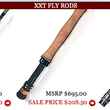
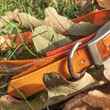















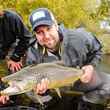
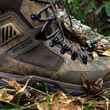



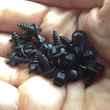



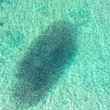

Comments
Greg replied on Permalink
What a phenomenal post. I'm a newbie. Fly-fishing for 30+ years. Attempting to tie MUCH less. Into 14s, (i can see strikes) 16s, OK, I see them (usually). 30? WTF???? I fish (for 30 years on the Rapidan river in Virginia. Trout aren't smart. They take what they (appear) to want. At times, not what I present to them Blown away at your post. 30? 32? I definitely appreciate your recommendation for (a reasonably priced) magnifier ( I'm 65, Dammit) Hatch is a wonderful resource. I'm seriously considering subscribing (have to consult with my IT literate sons). Thank you. Thank you. Illuminating post. WTF?? No "send". Hope this goes to you.
Tom Rettler replied on Permalink
Interesting article.
I'm now 85 and until recently spent my last 14 Minnesota winters in Southland, New Zealand. Not a bragging right, but a fact, that most fisherpersons would probably belong to the 20/20 club on their first day. The reason is that Mayflies in NZ are almost all small/tiny, and of few species, and the trout ( Rainbows and Browns) average one kilo in most streams. A kilo, of course, is approximately 2.25 pounds and a fish of that weight is almost always 20-21 inches long. My personal best on a size 20 parachute was just under 8 1/2 lbs. (weighed). But rarely did we need to go smaller than size 22.
If you would be interested in reading about fishing these streams, a close friend of mine (Ian Pullar - an Aussie) wrote a guide for fishing these rivers entitled New Zealand's Mataura River, A Fishing and Access Guide. He was generous enough to ask me to write the foreword for his book. Might be hard to find as it was Published in Tasmania but it is a beautiful book.
Ian was a master fly tyier and speciallized in small flies down to size 26. He tied what he called Tasmanian style and they are beautifully tied. And as you say, cautiously and patiently. Before he died I filmed him tying one of these flies, including all the Aussie accents. Then when he got home he sent me a beautiful handmade wooden fly box made of some beautiful Aussie hardwood. I've never fished any of the flies in the box here in the U. S..
Kevin Beck replied on Permalink
This is the biggest bunch of billshit I've read in a long time.... I've lived in Montana all my life and have become an expert at casting and fishing the most difficult waters we have. The henrys fork is one!!! Nobody uses a #30
Go pound salt dipshits
Taz replied on Permalink
Hey hot head, you should crack a beer and then reread the article. It indirectly (but very obviously) states that not many people fish this size flies. Just because YOU don’t fish them doesn’t mean no one fishes them. The world is bigger than you.
dipshit replied on Permalink
wow o'great one...full of sage wisdom and all things Montana, thank you for your printed word that cometh from inexhaustible years toiling in the waters of trout heaven...we are so fortunate for one of your stature to set the record straight.
You're an asshole
Pages